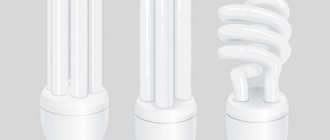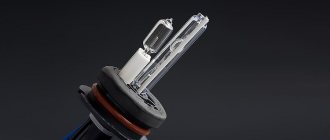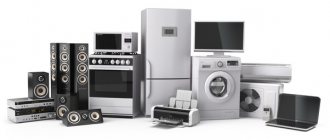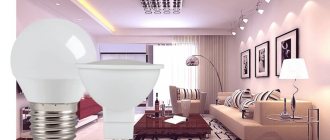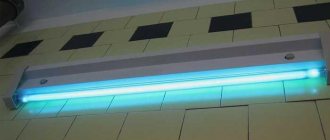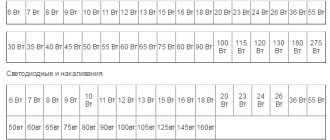Waste composition: waste mercury and fluorescent lamps
option 1:
option 2:
option 3:
Order on the appointment of a person responsible for mercury-containing and fluorescent lamps
| DATE: ________ No._____________ | On the organization of loading and transfer for disposal of solid municipal waste |
ORDER
In accordance with the Russian Federation Law “On Environmental Protection” No. 7-FZ, the Russian Federation Law “On Production and Consumption Wastes” No. 89-FZ.
I ORDER
1. Establish the following procedure for handling mercury, mercury-quartz, fluorescent lamps that have lost their consumer properties:
1.1. Electrical engineers responsible for receiving and disposing of mercury-containing lamps in departments must transfer the lamps to the designated storage area as mercury-containing lamps are generated with the issuance of “passed-and-accepted” invoices.
Responsible:
1.2. Electrical engineers are prohibited from storing waste mercury-containing lamps outside the designated area.
1.3. An electrical engineer **** receives used mercury-containing lamps, registering them in a journal indicating the number of lamps, article number, position and name of the person who handed over the lamps.
1.4.No later than the 5th day of the month following the reporting month, the electrical engineer **** transmits information about the amount of generation of waste mercury-containing lamps, indicating the article number, to the environmental protection engineer ****.
1.5. An environmental engineer transfers waste for disposal in accordance with the concluded agreement.
2. Entrust control over the implementation of this order to the chief engineer ***.
Bring this Order to employees in scanned form via email according to the Mailing List.
Executive Secretary ****.
Completion date – until ****.
Director **** _______________ ****
AGREED:
Chief Engineer ****
Position name personal signature initials, surname date month year
Artist: *****
Date, phone number
Literature
1 . Catalog “Low-pressure discharge fluorescent lamps”, Informelektro, 1986.
2. Catalog “High-pressure discharge lamps”, Informelektro, 1986.
3. Catalog “Low pressure discharge fluorescent lamps types LB 40-1E, LBC 40-1E”, Informelektro, 1988.
4 . Catalog “Low-pressure erythema discharge lamps”, Informelektro, 1986.
5 . Catalog “Low pressure discharge lamps for ultraviolet radiation”, 1986
6. Low pressure discharge lamps 09.50.01-90. M., Informelektro, 1990.
7. V.V. Fedorov. Fluorescent lamps. M., Energoatomizdat, 1992.
8 . V.F. Efimkina, N.N. Sofronov. Luminaires with high pressure gas discharge lamps. M. Energoatomizdat, 1984.
9 Temporary guidelines for calculating production and consumption waste generation standards. St. Petersburg, 1998.
Navigation
Instructions for waste mercury and fluorescent lamps
I APPROVED
Director _________________
__________________________
"_______" __________________ 2015
Instructions for accumulation, accounting, transfer of used mercury-containing lamps
1. General Provisions
1.1. Waste of hazard class I (extremely hazardous) - waste mercury-containing lamps (hereinafter referred to as ORTL) - must be collected and sent for demercurization.
1.2. Mercury-containing lamps (RTL) - lamps of the DRL, LB, LD, L18/20 and F18/W54 types (not made in Russia), and other types of lamps used for lighting in the premises of an organization.
Mercury lamps are gas-discharge light sources, the principle of which is as follows: under the influence of an electric field in mercury vapor pumped into a sealed glass tube, an electrical discharge occurs, accompanied by ultraviolet radiation. A phosphor applied to the inner surface converts ultraviolet radiation into visible light.
1.3. Waste mercury-containing lamps – used or unusable RTL.
1.4. Mercury is a substance of the FIRST hazard class. One broken lamp containing 0.1 g of mercury makes the air in a room with a volume of 5000 m3 unbreathable.
1.5. Mercury has a negative effect on the nervous system of the human body, causing emotional instability, increased fatigue, memory loss, and sleep disturbances. Pain in the extremities (mercury polyneuritis) is often observed. In addition, liquid metal has a toxic effect on the endocrine glands, on the visual analyzer, on the cardiovascular system, and digestive organs.
2. Storage conditions for used mercury-containing lamps.
2.1. The main condition when replacing and collecting ORTL is maintaining tightness.
2.2. ORTL must be collected in a single temporary storage location separately from all types of waste.
2.3. During the collection process, lamps are separated by diameter and length.
2.4. The containers for collecting and storing ORTL are entire individual cardboard boxes from lamps of the LB, LD, DRL, etc. types.
2.5. After packaging ORTL in storage containers, they should be placed in separate boxes made of plywood or chipboard.
2.6. Each type of lamp must have its own separate box. Each box must be signed (indicate the type of lamps - brand, length, diameter, maximum quantity that can be put in the box).
2.7. The lamps must fit tightly into the box.
2.8. The room intended for storing ORTL must be spacious (so as not to restrict the movement of a person with outstretched arms) and be able to be ventilated.
2.9. The room intended for storing ORTL must be removed from domestic premises, and access to the room by unauthorized persons must be limited.
2.10. In a room intended for storing ORTL, the floor must be made of waterproof, non-sorption material that prevents the entry of harmful substances (in this case, mercury) into the environment.
2.11. To eliminate a possible emergency situation associated with the destruction of a large number of lamps, in order to prevent adverse environmental consequences, in the room where ORTL are stored, it is necessary to have a container of water, at least 10 liters, as well as a supply of reagents (potassium manganese).
2.12. If the ORTL is broken, the storage container (the place of breakage) must be treated with a 10% solution of potassium permanganate and rinsed with water. The fragments are collected with a brush or scraper into a metal container with a tight-fitting lid filled with a solution of potassium permanganate.
2.13. For broken lamps, a free form report is drawn up, which indicates the type of broken lamps, their quantity, date of incident, location of the incident.
2.14. PROHIBITED: Store lamps outdoors; Storage in places where unauthorized people can have access to them; Storing lamps without containers; Storing lamps in soft cardboard boxes stacked on top of each other; Storing lamps on a ground surface.
3. Accounting for used mercury-containing lamps.
3.1.Recording is carried out in a special journal, where the movement of entire mercury-containing lamps and ORTL is mandatory.
3.2. The pages of the magazine should be numbered, laced and stapled.
3.3. The log book must be filled out by the responsible person. Data on received intact and used lamps is entered. The brand of lamps, quantity, date of acceptance and the person who hands over the lamps must be indicated.
4. The procedure for handing over used mercury-containing lamps to recycling enterprises
4.1. ORTL are submitted for disposal once per reporting period, but at least once every 11 months.
4.2. Used lamps are accepted dry, each lamp in a separate container. They are prevented from breaking or falling out during loading operations.
Developer:
Description of mercury lamps and features of use
Mercury-containing lamps (RL) belong to the gas-discharge type of light sources, within which optical radiation in mercury vapor is generated through a gas discharge.
Despite their danger due to the toxic mercury vapor they contain, most enterprises are in no hurry to abandon their use in their activities.
The design of the device includes the following elements:
- A heat-resistant glass flask with a phosphor applied to its inner surface. This reduces the load on the retina of the eye, which is why mercury lamps are considered one of the most gentle.
- Starter or choke. This device is necessary to regulate the current strength and heating rate of the gas in the flask.
- A quartz burner with two electrodes through which a high-voltage pulse is supplied.
- The socket is responsible for conducting current by connecting to the contacts of the lamp socket.
The main difference in the operation of gas-discharge lamps compared to other types of light sources is the use of a choke. This is a necessary element for safe operation, providing regulation of the current strength, and most importantly, an increase in the temperature of the gas contained inside the flask. Heating mercury vapor too quickly can lead to failure or explosion of the device. Before you turn on this module yourself, you need to familiarize yourself with its connection diagram.
Another feature is the recycling process. The mercury contained in lamps is a dangerous chemical element, which automatically assigns mercury lamps hazard class I. The disposal procedure takes place according to a specially developed method and taking into account all basic safety standards.
Calculation of waste of mercury, fluorescent lamps, mercury, mercury-quartz, fluorescent
How to calculate the amount of formation of mercury, mercury-quartz, fluorescent lamps that have lost their consumer properties?
To do this, it is necessary to quarterly raise write-off acts in the accounting department and keep records of written-off lamps by type of lamp. Further, according to the methodology - Calculation of volumes of waste generation MRO-6-99, you take the weight of a specific type of waste lamp, multiply it by the number of discarded lamps per quarter, convert to tons. As a result, you get the amount of waste lamps generated in tons.
To calculate the amount of formation of waste mercury and fluorescent lamps, you can use the calculation calculator:
Mercury lamps, mercury-quartz lamps, fluorescent lamps that have lost their consumer properties
| Home page Featured articles Random article Educational articles New additions Feedback We will help you write your papers! CATEGORIES: Archeology Biology Genetics Geography Computer Science History Logic Marketing Mathematics Management Mechanics Pedagogy Religion Sociology Technology Physics Philosophy Finance Chemistry Ecology We will help you write your papers! TOP 10 on the site Preparation of disinfectant solutions of various concentrations Low straight ball serve technique. Franco-Prussian War (causes and consequences) Organization of work in the treatment room Semantic and mechanical memorization, their place and role in the acquisition of knowledge Communication barriers and ways to overcome them Processing of reusable medical devices Samples of journalistic style text Four types of balance changes Problems with answers for the All-Russian Law Olympiad We will help you write your papers! DID YOU KNOW? The influence of society on humans Preparation of disinfectant solutions of various concentrations Practical work on geography for 6th grade Organization of work in the treatment room Changes in inanimate nature in autumn Cleaning the treatment room Solfeggio. All rules for solfeggio Beam systems. Determination of support reactions and pinching moments | Home Favorites Random article Educational New additions Feedback FAQ ⇐ PreviousPage 4 of 5Next ⇒ |
Waste is calculated based on the initial data of the enterprise using the formula [1]:
Mp.l = ∑ Kip.l·
Nip.l
·
C
·
mip.l /Нip.l
·
10-6, (1)
Where:
Mp.l - mass of spent light sources, t/year;
Kip.l – number of installed lamps, pcs;
Chi – operating time of the light source during three-shift work, hour/day;
C – number of days per year for lighting;
Нip.л – standard service life of the same lamp, h;
mip.l – lamp weight, kg.
The calculation is summarized in Table 3:
Table 3 – Calculation of waste generation standards – “Mercury, mercury-quartz, fluorescent lamps that have lost their consumer properties”
| Lamp brand | N RT - number of installed lamps, pcs. | Bp - lamp operating time, hours/day [1] | C - number of working days/year. | N - standard service life of the same lamp, h [1] | Krt - number of used lamps | mip.l - lamp weight, kg [1] | Motr - mass of used lamps, t |
| LB-36 | 5080 | 20,57 | 247 | 12000 | 5080,9 | 0,21 | 0,45 |
Waste paint materials based on acrylic polymers in an aqueous environment
Waste is calculated using a statistical method based on the initial data of the enterprise.
The calculation is summarized in table 4:
Table 4 – Calculation of waste generation standards – “Waste paint materials based on acrylic polymers in an aquatic environment”
Name
Waste generation,T/Year
Total education standard, t/year201520162017 Waste paint and varnish materials based on acrylic polymers in an aquatic environment 48,848,85049.2Solid waste of paints and varnishes based on alkyd resins modified with vegetable oils
Waste is calculated using a statistical method based on the initial data of the enterprise:
The calculation is summarized in table 5:
Table 5 – Calculation of waste generation standards – “Solid waste of paints and varnishes based on alkyd resins modified with vegetable oils”
Name
Sludge from hydraulic filters of spray booths with a water curtain
The amount of sludge extracted from the hydraulic filter baths of painting booths is calculated based on the initial data of the enterprise using the formula [2]:
M = mк·
da
·
(1 - fa)
·
k/(1 - B), (2)
Where:
mк – consumption of paint used for coating, t/year;
da – the proportion of paint lost in the form of an aerosol, %/100;
fa – the proportion of the volatile part (solvent) in paints and varnishes, %/100;
k – coefficient of air purification in the hydrofilter, %/100, taken from the passport for the hydrofilter (0.86) [2];
B – humidity of the sludge extracted from the hydrofilter bath, %/100, taken B = 0.6 [2].
The calculation is summarized in table 6:
Table 6 – Calculation of waste generation standards – “Sludge from hydraulic filters of paint booths with a water curtain”
| Waste generation, T/Year | Total education standard, t/year | |||
| 2015 | 2016 | 2017 | ||
| Solid waste of paints and varnishes based on alkyd resins modified with vegetable oils | 618 | 620 | 622 | 620 |
| Enamel brand | m к - consumption of paint used for coating, t/year | da is the proportion of paint lost in the form of an aerosol, %/100 [2] | fa is the proportion of the volatile part (solvent) in paints and varnishes, %/100 [2] | Weight of sludge, t/year |
| AK-194 | 2438,039 | 0,3 | 0,72 | 440,3 |
Containers made of ferrous metals contaminated with paints and varnishes (content 5% or more)
The number of containers made of ferrous metals contaminated with paints and varnishes is determined by the formula [2]:
P = Σ(Qi / Mi mi) 10-3, (3)
Where:
P – mass of container waste contaminated with paints and varnishes, t/year;
Qi – consumption of paints and varnishes of the i-th type, kg;
Mi – weight of paints and varnishes of the i-th type in one package, kg;
mi is the weight of an empty package of paints and varnishes of the i-th type, kg.
The calculation is summarized in table 7:
Table 7 – Calculation of waste generation standards – “Containers made of ferrous metals contaminated with paints and varnishes (content 5% or more)”
| Brand of paints used | Qi – consumption of paints and varnishes of the i-th type, kg | Mi – weight of paints and varnishes of the i-th type in one package, kg [2] | mi – weight of empty packaging for paints and varnishes of the i-th type, kg [2] | Education standard, t/year |
| GF-92GM | 913400 | 3 | 0,3 | 91,34 |
Spent fiberglass filters for spray booths, contaminated with paints and varnishes (content less than 5%)
The number of filters with paints and varnishes is determined according to the initial data of the enterprise using the formula [2]:
M = Mf.m + (mk·
da
·
(1 - fa)
·
kф/(1 - B)), (4)
Where:
Mf.m – consumption of filter material, t/year;
kf – coefficient of air purification by the filter element, taken according to the passport for the cleaning equipment = 0.86%;
mк – consumption of paint used for coating, t/year;
da is the proportion of paint lost in the form of an aerosol, %/100;
fa – the proportion of the volatile part (solvent) in paints and varnishes, %/100;
B – humidity of the sludge extracted from the hydrofilter bath, %/100, taken B = 0.6 [2].
The calculation is summarized in table 8:
Table 8 – Calculation of waste generation standards – “Spray fiberglass filters for spray booths, contaminated with paints and varnishes”
| Enamel brand | Mf.m - consumption of filter material, t/year; | mк - consumption of paint used for coating, t/year | da is the proportion of paint lost in the form of an aerosol, %/100 [2] | fa is the proportion of the volatile part (solvent) in paints and varnishes, %/100 [2] | Waste weight, t/year |
| AK-194 | 102,9 | 2438,039 | 0,3 | 0,72 | 543,9 |
Polyethylene packaging contaminated with paints and varnishes (the content of paints and varnishes is less than 5%)
Waste is calculated using a statistical method based on the initial data of the enterprise.
The calculation is summarized in table 9:
Table 9 – Calculation of waste generation standards – “Polyethylene packaging contaminated with paints and varnishes (paint and varnish content less than 5%)”
| Name | Waste generation, T/Year | Total education standard, t/year | ||
| 2015 | 2016 | 2017 | ||
| Polyethylene packaging contaminated with paints and varnishes (the content of paints and varnishes is less than 5%) | 291 | 290 | 293 | 292 |
Scrap and waste of ferrous metal products contaminated with paints and varnishes (paint and varnish content less than 5%)
Waste is calculated using a statistical method based on the initial data of the enterprise.
The calculation is summarized in table 10:
Table 10 – Calculation of waste generation standards – “Scrap and waste of ferrous metal products contaminated with paints and varnishes (paint and varnish content less than 5%)”
| Name | Waste generation, T/Year | Total education standard, t/year | ||
| 2015 | 2016 | 2017 | ||
| Scrap and waste of ferrous metal products contaminated with paints and varnishes (paint and varnish content less than 5%) | 22 | 20 | 24 | 22 |
Aluminum aerosol cans contaminated with paints and varnishes (paint and varnish content less than 5%)
Waste is calculated using a statistical method based on the initial data of the enterprise.
The calculation is summarized in table 11:
Table 11 – Calculation of waste generation standards – “Aluminum aerosol cans contaminated with paints and varnishes (paint and varnish content less than 5%)”
| Name | Waste generation, T/Year | Total education standard, t/year ⇐ Previous4Next ⇒ | ||
Requirements for the storage area for waste mercury lamps
The accumulation of waste of hazard class 1 “mercury lamps, mercury-quartz lamps, fluorescent lamps that have lost their consumer properties” must be carried out separately from other types of waste, in a specialized container installed in a room allocated for these purposes in accordance with Resolution dated 28.12. 2021 No. 2314.
You can download it here:
The enterprise must have approved instructions for handling waste of hazard class 1 “Mercury, mercury-quartz, fluorescent lamps that have lost their consumer properties.”
4. Places where waste mercury-containing lamps are accumulated by consumers of mercury-containing lamps who are owners, tenants, users of premises in apartment buildings are determined by the indicated persons or, on their behalf, by persons managing apartment buildings on the basis of a concluded agreement for the management of an apartment building or a contract for the provision of services and (or ) performing work on the maintenance and repair of common property in such houses that organize such places of accumulation in places that are the common property of the owners of apartment buildings, in accordance with the requirements for the maintenance of common property provided for by the Rules for the maintenance of common property in an apartment building, approved by a resolution of the Government of the Russian Federation Federation dated August 13, 2006 N 491 “On approval of the Rules for the maintenance of common property in an apartment building and the Rules for changing the amount of payment for the maintenance of residential premises in the case of the provision of services and performance of work on the management, maintenance and repair of common property in an apartment building
house of inadequate quality and (or) with interruptions exceeding the established duration,” and notify the operator of such accumulation places on the basis of a waste management agreement.
5. Local government bodies organize the creation of places for accumulation of used mercury-containing lamps, including in cases where the organization of such accumulation places in accordance with paragraph 5 of these Rules is not possible due to the lack of premises in apartment buildings for organizing accumulation places, as well as informing consumers about the location of such places.
6. The accumulation of undamaged waste mercury-containing lamps is carried out in accordance with the safety requirements provided by the manufacturer of mercury-containing lamps, specified in the operating rules for such products. The accumulation of undamaged waste mercury-containing lamps is carried out in individual and transport packaging, ensuring the safety of used mercury-containing lamps. It is allowed to use packaging from new lamps to accumulate used mercury-containing lamps in order to eliminate the possibility of damage to such lamps.
7. Accumulation of damaged waste mercury-containing lamps is carried out in sealed transport packaging to prevent environmental pollution and harm to human life and health.
The accumulation of used mercury-containing lamps is carried out separately from other types of waste. The combined accumulation of damaged and undamaged mercury-containing lamps is not allowed.
8. In the event of contamination of the premises where the accumulation site of used mercury-containing lamps is located, with vapors and (or) mercury residues, the person who organized the accumulation sites must ensure that work is carried out to neutralize the waste of used (including damaged) mercury-containing lamps with the involvement of an operator on the basis agreements for the provision of waste management services.
Resolution dated December 28. 2021 No. 2314
And one more thing: used mercury-containing lamps should be stored in rooms with at least natural ventilation. I wrote about this here.
Fluorescent lamps - characteristics and markings
Linear fluorescent lamps for wide use, having bulbs in the form of tubes, are made with diameters: 38 mm (bulb designation T12), 26 mm (flask designation T8) and 16 mm (flask designation T5). Lamps with T5 bulbs are designed to work with electronic ballasts. Compact lamps with bases similar to those of household incandescent lamps have an electronic ballast inside the lamp; with other bases they can be designed to work with external ballasts.
Their manufacturers have not yet come to a unified method for marking lamps. But most often lamps have in their designation the lamp power and color characteristics written through a fraction. For example, in Fig. Figure 1 shows the designation of the Osram lamp.
Rice. 1. Osram lamp, 80 W, Ra = 80 - 89, color temperature 3000 oK
The first digit (8) in the designation 830 indicates the color rendering index Ra, the next two digits (30) color temperature. In addition to the numerical marking, the inscription “warm white” is applied. Lamps with a color temperature of 4000 oK are marked 840 cool white. Lamps with Ra 80 or more are high-quality lamps intended for lighting rooms with long-term occupancy. Lamps with Ra less than 80 are primarily intended for lighting rooms with moderate requirements for color rendering and comfort. For example, lamps with the designation 765 (Ra = 70 - 79, color temperature 6500 oK) or 640 (Ra = 60 - 69, color temperature 4000 oK).
Compact fluorescent lamps are marked either with a digital code or with an indication of the shade of white. For example, a lamp with an E27 base (Fig. 2) is marked Cool light - cold light. This lamp has a color temperature of 4200oK.
Fig.2 Compact fluorescent lamp with E27 socket and built-in electronic ballast
In accordance with GOST 6825-91, domestically produced fluorescent lamps are designated:
LD – daytime color lamp (corresponds to color temperature 5400 – 6500 oK),
LHB - cold - white (lamp color temperature 4300 - 5000 oK),
LB – white (lamp color temperature 3300 – 4000 oK),
LTB – warm white (lamp color temperature 2700 – 3000 oK).
Color temperatures for these lamps are approximate.
Note:
A wide selection of different lamps for lamps is presented in modern online stores. A brief description of the most interesting stores, as well as some notes on purchasing lamps and fixtures, can be found on the Lamps Stores website page.
May 3, 2013
To the LUMINAIRES section
TO CONTENTS (All articles on the site)
Disposal of waste mercury and fluorescent lamps
Waste mercury, mercury-quartz, fluorescent lamps that have lost their consumer properties must be transferred to the operator for handling waste mercury-containing lamps.
An operator for handling waste mercury-containing lamps is a legal entity and an individual entrepreneur carrying out activities for the collection, transportation, processing, disposal, neutralization, storage of waste mercury-containing lamps on the basis of a license obtained in the prescribed manner for carrying out activities for collection, transportation, processing, disposal, neutralization and disposal of waste of I - IV hazard class
Weight of mercury lamps
RSS
| Category : Waste management | |
| Replies: 10 |
You can add a topic to your favorites list and subscribe to email notifications.
| Catherine |
| Colleagues, please tell me, who knows the weight of Lamps DNAT 400, DRV 500, LB 36 W, LB 18 W, Energy Saving E27 28 W, Bactericidal 55 W, Bactericidal 10 W? |
| I want to draw the moderator's attention to this message because: Notification is being sent... |
| Catherine [email hidden] Russia, Tomsk Wrote 39 messages Write a private message Reputation: | #2[5906] January 11, 2021, 10:26 |
Notification is being sent...
| Catherine [email hidden] Russia, Tomsk Wrote 39 messages Write a private message Reputation: | #3[5907] January 11, 2021, 10:33 |
Notification is being sent...
| Svetlana [email protected] Belarus, Minsk Wrote 47 messages Write a private message Reputation: | #4[5909] January 11, 2021, 11:00 |
Notification is being sent...
| Nikita [email hidden] Russia, Kaliningrad Wrote 104 messages Write a private message Reputation: | #5[5910] January 11, 2021, 11:02 |
Ekaterina wrote:
And another question is how to convert solid waste in cubic meters into tons?
vragmusora.ru/calc-nasypnoy-plotnosti.html
I want to draw the moderator's attention to this message because:Notification is being sent...
| Catherine [email hidden] Russia, Tomsk Wrote 39 messages Write a private message Reputation: | #6[5916] January 11, 2021, 11:35 |
Notification is being sent...
| Julia [email hidden] Russia, Yaroslavl Wrote 1 message Write a private message Reputation: | #7[5953] January 11, 2021, 20:03 |
Ekaterina wrote:
Colleagues, please tell me, who knows the weight of Lamps DNAT 400, DRV 500, LB 36 W, LB 18 W, Energy Saving E27 28 W, Bactericidal 55 W, Bactericidal 10 W?
Ekaterina, the waste project has all the data: the weight of the lamps, and the conversion factors from m3 to tons. At least that's how it is for me...
I want to draw the moderator's attention to this message because:Notification is being sent...
| Catherine [email hidden] Russia, Tomsk Wrote 39 messages Write a private message Reputation: | #8[5955] January 12, 2021, 5:02 |
Notification is being sent...
| Gulnara [email protected] Russia, Kazan Wrote 369 messages Write a private message Reputation: | #9[5960] January 12, 2021, 8:29 am |
Notification is being sent...
Let's pretend to be hoses| Anastasia [email protected] Russia, Buzuluk Wrote 876 messages Write a private message Reputation: | #10[5968] January 12, 2021, 10:49 |
Notification is being sent...
| Catherine [email hidden] Russia, Tomsk Wrote 39 messages Write a private message Reputation: | #11[6024] January 13, 2021, 8:58 |
Notification is being sent...
« First ← Prev.1 Next → Latest (1) »
In order to reply to this topic you need to register.
